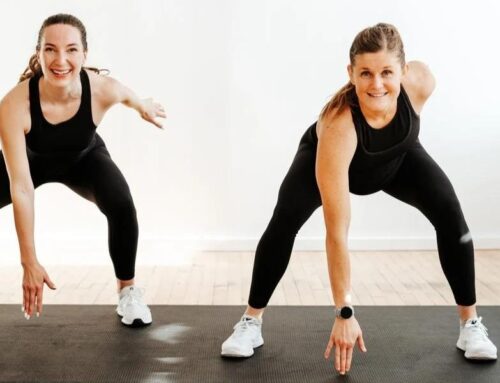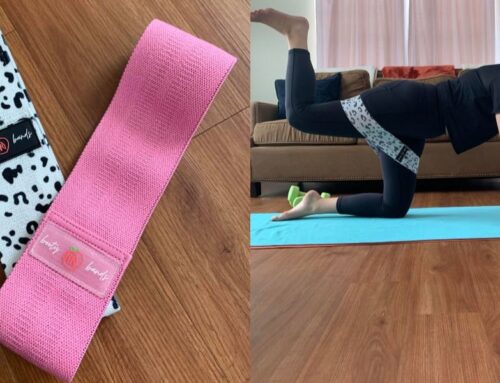
Staying active is crucial for maintaining a healthy lifestyle. But, incorporating stretching into your workout routine can be just as important.
Whether you’re an athlete or just looking to improve your overall fitness, static stretching can have numerous benefits. In this article, we will delve into what static stretching is, and its advantages, and provide examples of exercises you can include in your workout.
What is Static Flexibility?
Static flexibility is a type of flexibility training that involves holding a stretched position for a set period of time without any movement. This type of stretching is different from dynamic stretching, which involves movement.
The goal of static flexibility is to increase the range of motion and reduce muscle tension in the joints and muscles. This can be achieved through exercises such as hamstring stretches, calf stretches, quad stretches, and shoulder stretches, to name a few.
By incorporating static flexibility exercises into your workout routine, you can experience a variety of benefits, including improved circulation, enhanced athletic performance, improved posture, and reduced muscle tension.
Difference between Static Stretching and Dynamic Stretching
Static stretching and dynamic stretching are two different types of stretching exercises that serve different purposes. Here’s a comparison between the two:

Static Stretching
- Involves holding a stretch for a set period of time, usually 15-30 seconds, without any movement.
- Helps to improve flexibility by lengthening muscles and increasing range of motion.
- Ideal for use before and after physical activity to reduce muscle tension and prevent injury.
- Suitable for individuals of all fitness levels, including athletes and non-athletes.
Dynamic Stretching
- Involves active, controlled movements that take the muscle through its full range of motion.
- Helps to improve flexibility and range of motion, as well as warm up the muscles before physical activity.
- Ideal for use as a warm-up exercise before more intense physical activity.
- Typically more suitable for athletes and individuals who engage in regular physical activity.
In conclusion, both static stretching and dynamic stretching have their own unique benefits and are important components of a comprehensive fitness routine. Whether you’re an athlete or just looking to improve your overall health and wellness, incorporating both types of stretching into your workout routine can help you achieve your fitness goals.
Benefits of Static Stretching
Static stretching involves holding a stretch for a set period of time without any movement. This type of stretching has numerous benefits for your overall health and wellness, including:
Improves Flexibility
One of the most obvious benefits of static stretching is that it improves your flexibility. By holding a stretch for a set period of time, you help to lengthen your muscles and increase your range of motion. This is particularly beneficial for athletes and anyone who engages in physical activity.
Reduces Muscle Tension
Static stretching can also help to reduce muscle tension and relieve any tightness or stiffness you may be experiencing. This can lead to improved posture, reduced risk of injury, and increased ease of movement.
Enhances Athletic Performance
Incorporating static stretching into your workout routine can also enhance your athletic performance. By increasing your flexibility and reducing muscle tension, you can move more freely and with greater ease, which can help improve your overall performance.
Promotes Relaxation
Static stretching can also promote relaxation and reduce stress. By taking the time to stretch, you can focus on your breathing and release any tension you may be holding in your body. This can help to calm your mind and reduce stress levels.
Prevents Injuries
Regularly incorporating static stretching into your workout routine can also help to prevent injuries. By keeping your muscles flexible and reducing muscle tension, you are less likely to experience any strain or injury during physical activity.
Incorporating static stretching exercises into your workout routine can have numerous benefits for your overall health and wellness. By taking the time to stretch, you can improve your flexibility, reduce muscle tension, enhance athletic performance, promote relaxation, and prevent injuries.
Examples of Static Stretching Exercises to Add to Your Workout
Static stretching involves holding a stretch for a set period of time without any movement. Here are some of the most effective static stretching exercises you can add to your workout routine.

Hamstring Stretch
The hamstring stretch is a great exercise for improving flexibility in your legs. Here’s how you can do it:
- Start by sitting on the floor with your legs extended in front of you.
- Reach forward and try to touch your toes, holding the stretch for 30 seconds.
Quad Stretch
The quad stretch is a great exercise for improving flexibility in your quadriceps. Here’s how you can do it:
- Stand with your feet hip-width apart and bend your right knee, bringing your heel towards your butt.
- Hold onto your ankle and hold the stretch for 30 seconds. Repeat on the other side.
Shoulder Stretch
The shoulder stretch is a great exercise for improving flexibility in your shoulders. Here’s how you can do it:
- Stand with your feet hip-width apart and reach your right arm across your chest, holding onto your elbow with your left hand.
- Hold the stretch for 30 seconds. Repeat on the other side.
Calf Stretch
The calf stretch is a great exercise for improving flexibility in your calves. Here’s how you can do it:
- Stand facing a wall, with your hands on the wall for balance.
- Place one foot behind the other and bend your front knee, keeping your back leg straight.
- Hold the stretch for 30 seconds. Repeat on the other side.
Remember, it’s important to stretch gradually and never push yourself to the point of pain. Start with holding each stretch for 30 seconds and gradually increase the time as your flexibility improves. Incorporating these static stretching exercises into your workout routine can help improve your overall flexibility, reduce muscle tension, and enhance athletic performance.
The bottom line
Incorporating static flexibility into your workout routine can have numerous benefits, including improved range of motion, reduced muscle tension, increased circulation, better posture, and increased athletic performance.
So, add these exercises to your routine and start reaping the rewards of static flexibility today! Whether you’re an athlete or just looking to improve your overall fitness, the benefits of static flexibility are worth exploring.
Don’t wait any longer, unleash the power of static flexibility and start seeing results!



